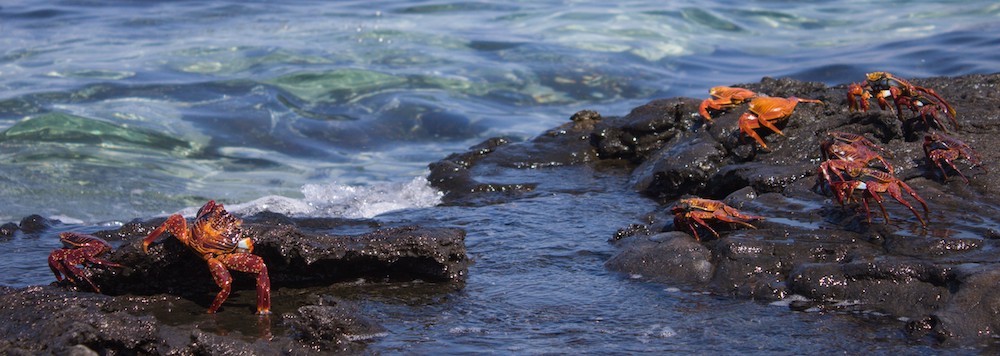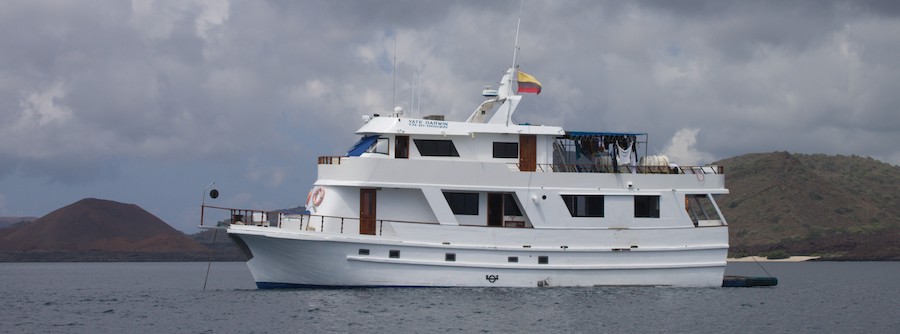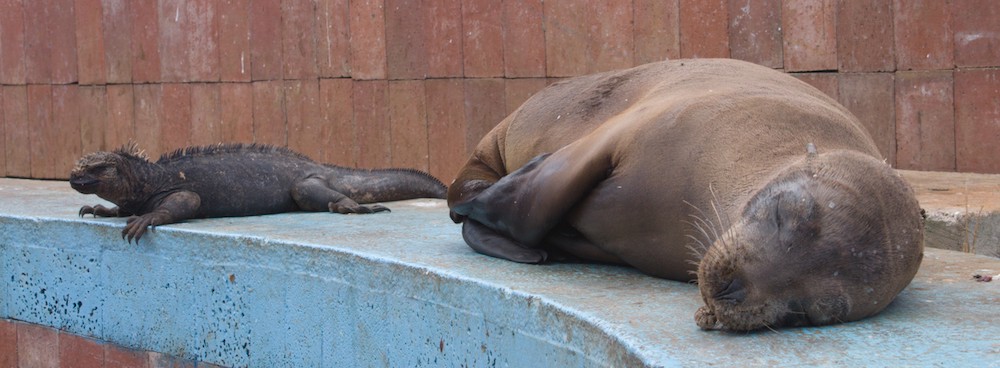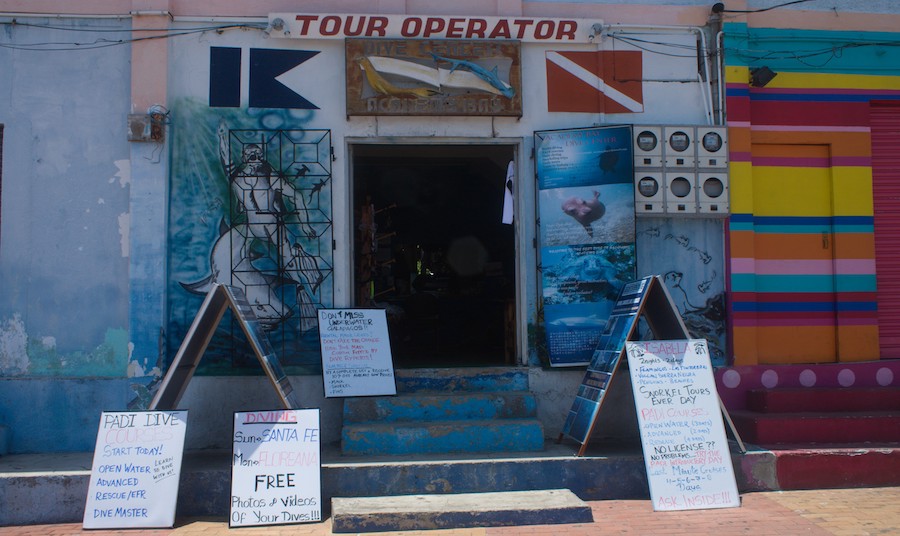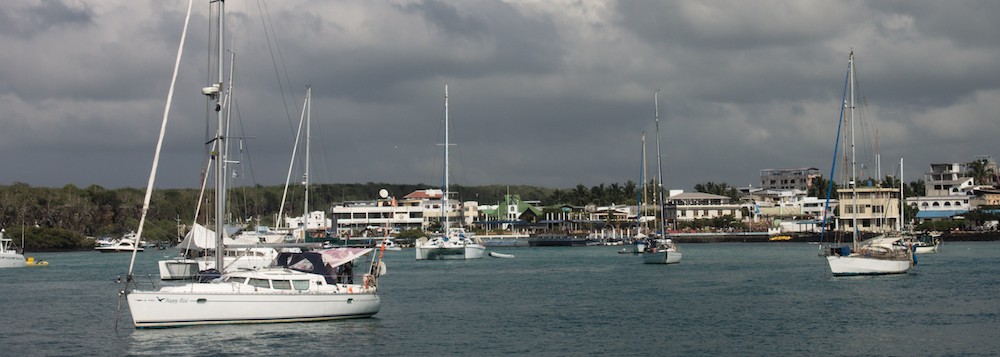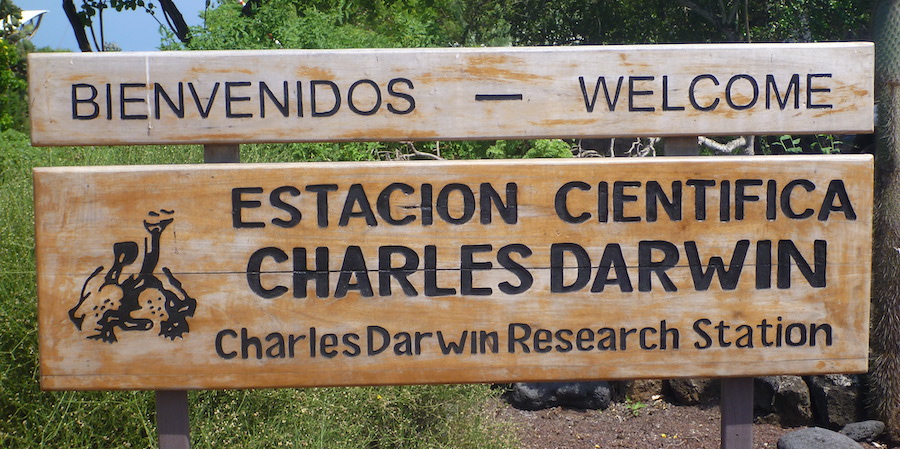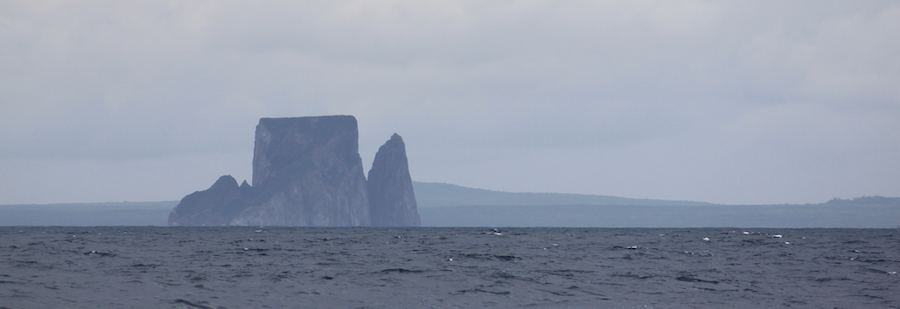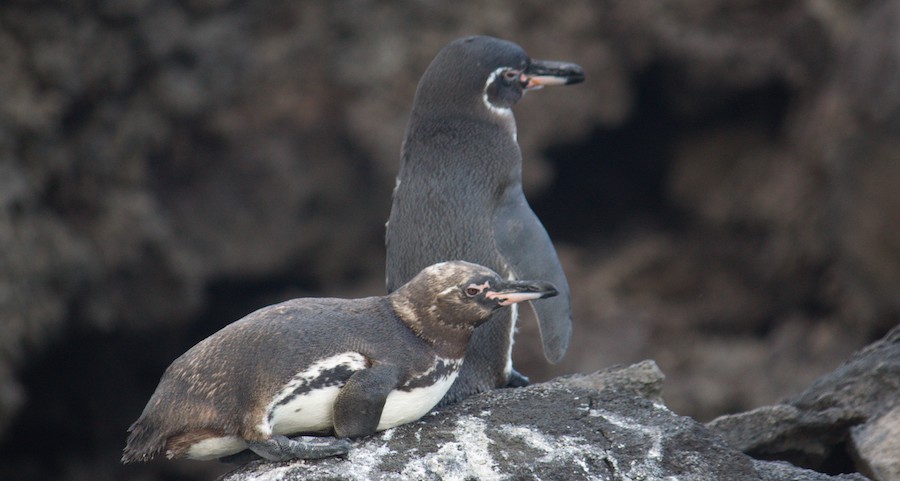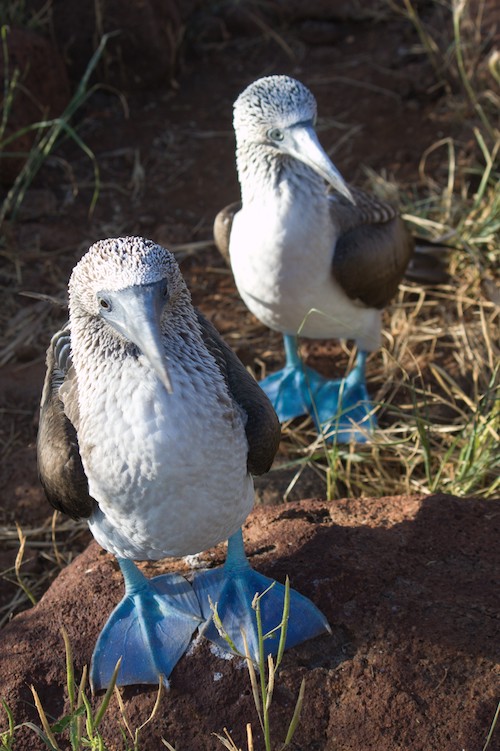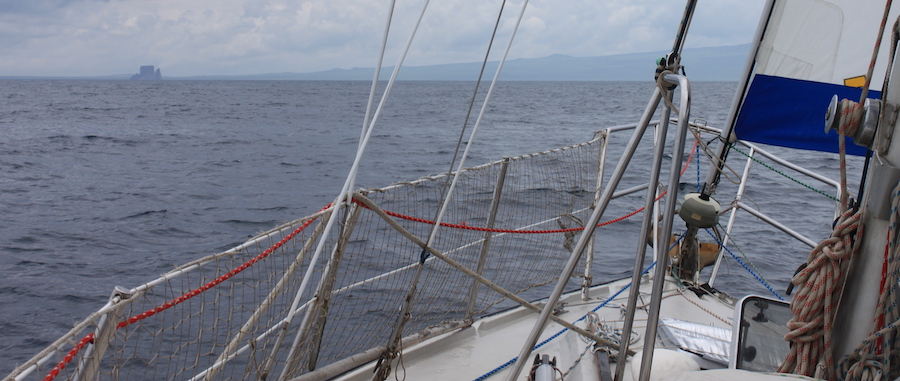In the Galápagos Islands, eons of evolution can be observed at a glance, whether you focus on Darwin’s finches, lumbering land tortoises, or the surreal underwater landscape where hammerhead sharks glide beside sea turtles. As such, the Archipélago de Colón, as it’s officially called, features on many a bucket list. But as a remote island group hundred of miles from the South American mainland, it can be a tricky place to visit on a budget. However, it is possible to see the Galápagos and even book a cruise on a budget if you’re in the know. Here’s how…
The best way to visit the Galápagos is on a cruise that takes you to a number to different islands (which was pretty much Darwin’s point of species evolving into separate niches). These can be extremely pricey if you book in advance, but last minute deals abound in Puerto Ayora on Santa Cruz, the “capital” of the Galápagos (and to a lesser extent, in Quito on the Ecuadorian mainland). So, that’s the trick. (Actually, that’s trick 1. Read on for trick 2 below!)
This approach is not as much as a gamble as it seems, because tour operators are desperate to fill every berth, offering cut-rate last-minute deals. I started my search after breakfast, and by lunch, I had my pick of several tours. I ended up booking a four-day tour on a sixteen-person “tourist class” boat for $525 (down from a regular price of $1,500) a few days prior to its departure. (That was a few years back, but I’ve asked around, and $800 for a week-long cruise is still possible these days.) Once aboard, everyone is treated the same, from the folks who paid top dollar to secure their spot months earlier to ragamuffins like us who stumbled along at the last minute.
Of course, all this means being a little adventurous, but isn’t that the point?
Deciding on a tour of the Galápagos Islands
First, it’s important to understand the lay of the land. The tourism hub of the Galápagos Islands is Puerto Ayora on the island of Santa Cruz, located in the center of the archipelago. All flights to the Galápagos land on Baltra, an island separated from Santa Cruz by a narrow channel, with ferries running in between. So, the strategy is to book a flight to Baltra and a hotel for one or two nights. There are dozens of simple, clean, inexpensive hotels in Puerto Ayora, and last-minute reservations are the norm, so don’t stress.
Once you’re set up in Puerto Ayora, you can explore town (everything is easily reached on foot) and shop around for last-minute deals. Then, you can explore local sights while waiting for your departure date. “Local” can mean the interesting sights on Santa Cruz itself (more on that below) or one of the closer islands. There are also lots of day trips to islands farther afield. So that’s the next trick: wherever your cruise won’t take you, you can probably visit by day trip. There are ferry services and day/overnight trips from Santa Cruz to neighboring San Cristóbal and Isabela, the largest of the Galápagos Islands (roughly a two-hour trip to each one way). In fact, some people explore the Galápagos entirely through day trips/short overnights from a base in Puerto Ayora. I don’t recommend this due to the amount of time spent shuttling around, but it does provide a practical means of supplementing the itinerary of the cruise you book.
Several classes of tour boat operate in the Galápagos, “tourist class” being the most basic. All carry certified guides. To me, price and the size of the boat was the most important criteria, with small being a plus in most cases. Smaller boats can anchor in tighter bays and generally have a nicer, family atmosphere among crew and guests. However, a bigger ship with a greater cruising range also has its advantages. Ultimately, though, you can only see so much in so many days, and whether that’s on several neighboring or far-flung islands is a moot point (unless you’re a true specialist determined to track down a very particular species).
Diving/snorkeling in the Galápagos Islands
It’s also possible to book a scuba cruise of the Galápagos Islands, which are pricier. There are also plenty of day trips bookable from Puerto Ayora and Puerto Baquerizo Moreno that offer both diving and snorkeling. (See Kicker Rock under San Cristóbal, below.)
Practicalities of visiting the Galápagos Islands
As mentioned, flights land on Baltra, just off Santa Cruz, where you’ll pay the Galápagos National Park fee of $100 in cash (US dollars are the official currency of Ecuador). This will set the tone for the rest of your stay, because most transactions on the islands are made in cash (including large outlays such as cruises). Come prepared with lots of cash to avoid multple trips to ATMs which often have limited withdrawal amounts.
Santa Cruz/Puerto Ayora
As the biggest town in the archipelago, Puerto Ayora offers the widest choice of tours and services. There are ATMs, Internet cafes, and supermarkets stocking a fair range of goods. There is a bank, hardware store, plus the usual traveler services: laundry, restaurants, and post office.
Santa Cruz is surrounded by a cluster of small islands, each with its own endemic species. This makes Puerto Ayora the best place to stay in terms of covering the most ground by taking multiple day trips. Daily tours depart for places like Seymour Island, Bartolomé, Floreana, and even Isabela. Local sights on Santa Cruz that can be reached without a tour include the Darwin Research Station, spectacular Tortuga Bay (a beach and neighboring lagoon where you can snorkel with sharks), the canyon-like cleft of Las Grietas, and sights in the highlands ecosystem (including giant turtles, sink holes, and lava tubes).
San Cristóbal/Puerto Baquerizo Moreno
Puerto Baquerizo Moreno (aka Wreck Bay) on San Cristóbal offers a number of eateries, basic grocery stores, Internet cafes, a post office, ATMs, a bank, and a daily farmer’s market. A number of tour companies offer local and inter-island trips, but often require a six or ten person minimum to operate. Several interesting Cristóbal sights can be reached without a tour, including a turtle reserve, a highlands lagoon, and several nearby walks. A handful of dive shops offer day trips to the offshore cliff of Kicker Rock, where hammerhead sharks and sea turtles are a common sight.
Isabela
Visitors based on Isabela have the run of the largest island in the archipelago, but most sights can only be visited as part of a tour with a certified guide (these can be booked locally at short notice). There is a weekly farmer’s market and several minimarts that sell basic goods, but no bank or ATMs. On Isabela, penguins, marine iguanas, and flamingos are a common sight, and excursions to view the volcanoes, endemic turtles, and flightless cormorants are possible.
Ultimately, you’ll have to decide exactly where and how to go based on practical considerations and budget. While I have focused on the monetary facts of visiting the Galápagos, let’s not lose sight of the rewards. Think of the value you place on swimming with penguins at the equator, following the tracks of marine iguanas, or observing blue-footed boobies perform their mating dance just a wingspan away from your camera lens. No matter how you choose to explore the islands, the superlatives of the Galápagos will stay with you a lifetime!
What to pack for a trip to the Galápagos Islands
As slightly ragged sailors (see note below), we got a chuckle watching tour groups walking around the islands. Almost everyone was dressed in brand-new Patagonia/REI/LL Bean gear and carrying half their weight in camera gear. Meanwhile, we got around just fine in worn T-shirts and sandals. Being on the equator, Galápagos weather is mild, though I did witness a few deluges and high winds.
Most tour companies insist you wear sturdy close-toed shoes, but other than that, packing should be very straightforward. Here’s a short list of must-brings:
- Crocs, Tevas, or similar sandals good for wet and dry conditions
- sun hat
- waterproof camera
- rain jacket
- day pack
- water bottles/hydration system
- snorkel/mask with prescription lens
- dry bag for wet landings (see below)
Here, I’ll briefly expand on two points:
-
Cruise stops include “dry” and “wet” landings. “Dry” means an easy dinghy trip from the mother ship to a quiet beach or low rocks where you can easily disembark. “Wet” landings mean you’ll have to wade ashore or splash through surf to get there. I saved several of my fellow passengers’ cameras one day when we departed a beach through high surf. The dinghy nearly flipped, and everyone was drenched — but the cameras I’d put in my dry bag were fine. Whew!
-
Snorkel/mask: all tours include underwater viewing opportunities, and most provide free snorkel gear. It’s nicer to clamp your teeth around your own snorkel, however. More important is the mask. If you’re like me and wear prescription glasses, it really pays to get a prescription mask for a clear view of all the wonders you’ve come so far to see. My budget solution was to silicone cheap prescription lenses into a regular snorkel mask. If you don’t wear contacts, this is a good option.
Resources:
- Galápagos Conservancy - a U.S.-based nonprofit with info on entry requirements and other practicalities.
- This blog post does a good job explaining types of cruise ships, etc.
- Identification Guide to Galápagos Birds & Mammals or Fold-out Pamplet
- Lonely Planet Ecuador & the Galapagos Islands
Note: I sailed to the Galápagos islands on my own sailboat several years ago – a pretty amazing way to visit! That’s another story, told on this blog and in my cruising guide, Pacific Cruising Notes. The point is, tight regulations keep sailors from roaming the islands as they please. That meant that once we arrived, I had to hit the pavement and explore our options like any land-based traveller, so the tips above should be useful to you even if you don’t spend ten days sailing over from Panama!
I hope this has been helpful and interesting, either as a planning tool or armchair adventure. For other exciting trips and ideas, click on “HOME” at the top of the page. Thank you for visiting TheTravelBug.blog and happy travels!
